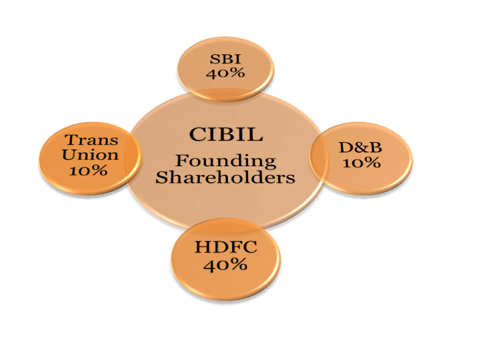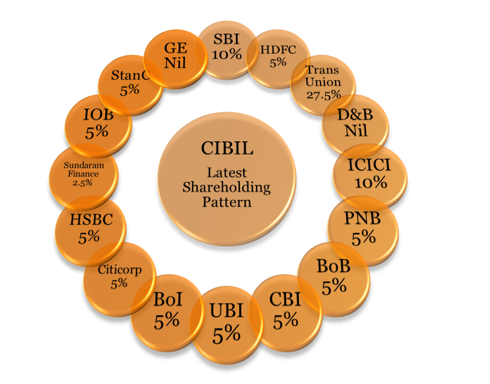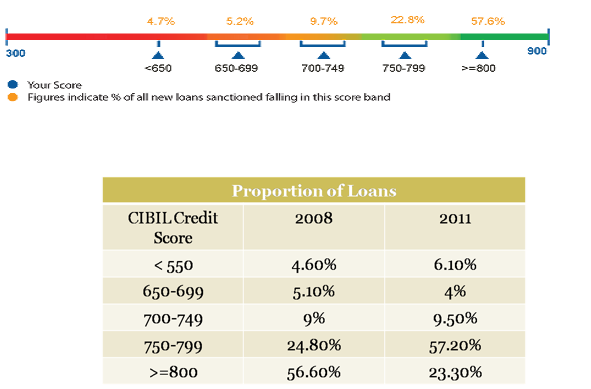This post is written by Shiv Kukreja
You know how increasingly critical your credit score is becoming these days. Nowadays, even one’s employment prospects could be affected by this score as the employers have started asking prospective candidates to submit their credit information report (CIR) during the interview process and a few candidates get rejected due to their poor credit history.
A few days back a friend of mine told me about this case in which a senior level MBA was refused employment in a bank because of his poor credit history. The employer came to know about a credit card payment default by this guy while carrying out his background check. I think time is not very far away when one would be required to upload these reports on matrimonial sites to find a suitable match 🙂 or even during school admissions of their children.
What is a CIBIL Credit Information Report (CIR) and what is its significance?
A CIBIL Credit Information Report (CIR) is a record of one’s credit payment history compiled from information provided by the lenders such as banks and financial institutions. It provides details about one’s basic information, details about all the credit facilities availed, past payment history, amount overdue, current status, inquiries made etc.
Critical attributes of your Credit Information Report:
Payment History – This section of the report shows your history of payments for a period of 36 months against the loan(s) taken or credit card dues. Days Past Due or DPD tells a lender by how many days the payment was late after the “due date of paymentâ€.
Current Outstanding Balances – This section of the report shows the current outstanding balances on all the loans taken by you and accordingly helps the lender to determine your strength to take on additional EMIs in relation to your current income. Naturally, lower the current outstanding balances, the better the chance of your loan getting approved.
New Credit Facilities – This section of the report shows all the credit facilities that have been sanctioned to you in the recent past, as a result of which the proportion of the monthly outflow against your monthly income must have increased and it is a negative factor from the lender’s point of view.
New Inquiries – This section of the report shows all of the inquiries that have been made in the recent past by the lenders regarding your loan applications. So, a higher no. of inquiries indicates an urgent need of money on your part and hence a lower credit score.
Here is a Sample Credit Information Report and we try to make you understand what is there inside this report.
Sample CIR
Understanding the terms of a Credit Information Report:
Sanctioned Amount:Â This is the loan amount disbursed by a lender to a borrower.
Current Balance:Â This is the outstanding amount a borrower still owes on a particular credit facility. Lenders typically take 30-45 days after the payment is received to update it with CIBIL.
EMI Amount:Â Equated Monthly Installment that a borrower pays on the sanctioned loan.
Actual Payment Amount:Â This is the amount a borrower has actually paid against the due amount or EMI. If it is a loan, this amount may be more or less than the EMI Amount.
Amount Overdue:Â This is the amount that has not been paid against the due amount.
Repayment Tenure:Â It is the term of the loan.
Collateral:Â An asset like property, shares, gold etc. which has been provided to a lender as a security to protect the lender in the event of a loan default.
Credit Limit:Â Amount of credit available in case of credit card or overdraft facility.
Cash Limit:Â Amount of cash one can withdraw with the credit card.
High Credit:Â Highest amount ever billed against a credit card or overdraft facility.
Days Past Due (or DPD): DPD suggests the no. of days a due payment was late after the “due date of paymentâ€. If it is “XXXâ€, then DPD was not reported by the lender.
Asset Classification (or AC): These are types of DPD based on RBI’s Asset Classification     norms.
STD – Standard – Payments made within 90 days after the due date. After 90 days, it is termed as a Non-Performing Asset (NPA).
SMA – Special Mention Account –Â Special account created for reporting Standard account, moving towards Sub-Standard.
SUB – Sub-Standard –Â An account which has remained an NPA for up to 12 months.
DBT – Doubtful –Â An account which has remained an NPA for a period of 12 months.
LSS – Loss –Â An account where loss has been identified and remains uncollectible.
Enquiry: Enquiries are added to one’s report everytime a lender decides to access the borrower’s CIR.
Control Number (or CN):Â This is a unique number of every Credit Information Report (CIR).
Ownership – Responsibility of Payments:
Single – A single borrower is solely responsible for making payments against the credit.
Joint – More than a single borrower jointly responsible for making payments against the credit. This will also reflect on the other individual(s) CIR.
Guarantor – A guarantor pledges to repay a loan on behalf of a third party who has taken the loan.
Authorised User – This is used for ‘add-on’ credit cards. An authorised user can use the add-on credit card but he is not responsible for paying the dues.
Written-Off and Settled Status:Â If the lender has either restructured a loan or has written it off or has settled it at some amount less than what the lender believes it was owed, then this section would be seen as populated in the report.
Written-Off Amount (Total):Â This field reflects the total loan amount written-off by the lender.
Written-Off Amount (Principal):Â This field reflects the principal amount written-off by the lender.
Settlement Amount:Â This is the amount that the borrower has agreed to pay and the lender has agreed to settle the claim against the amount due. The rest of the amount is written-off by the lender.
Suit filed/Wilful Default:Â In case the lender has filed a suit against a borrower, the lender has to report it as per the RBI guidelines as one of the following: 1) No Suit Filed 2) Suit Filed 3) Wilful Default 4) Suit Filed (Wilful Default).
CIR provide lenders the ability to differentiate between those who have honored their obligations responsibly and those who have defaulted. Individuals who appropriately manage their obligations build a reputational collateral with the lenders. In turn, this reputational collateral allows them to negotiate better terms with a lender.
Hence, whenever you decide to start your loan hunt, it is advisable to purchase and review your CIR. It helps you understand what the lender will review while evaluating your application. So, you have time to identify the discrepancies that you may find on your CIR and get them rectified on time in order to prevent any problems during the loan evaluation process.




Debt Recast means that your lenders alter the terms of your loan easing your interest and / or principal burden, and this is usually done when a company is facing adverse circumstances. Lenders believe that easing the loan conditions will help the company get back on its feet and will be beneficial for them in the long run.
If you look at how the Kingfisher Airlines story has evolved in the past few years, Kingfisher lenders had recast their debt once in November 2010 and the details from that debt recast are good examples of what easing interest or principal burden means.
Here are the five main points from that debt recast:
(1) Conversion of debt of upto Rs. 1355 crores from lenders into share capital.
(2) Conversion of debt of upto Rs. 648 crores from promoters into share capital.
(3) Reschedulement of repayment of the balance debt to lenders over 9 years with a moratorium of 2 years.
(4) Reduction in interest rates.
(5) Sanction of additional fund and non-fund based facilities by the lenders.
The first of these points is fairly easy to understand which means that the lenders converted their debt into shares and this resulted in forgoing their guaranteed interest payments and instead their loans are now converted into shares which don’t have a guaranteed payout and are more volatile in nature. Kingfisher Airlines benefited because they are relieved of interest payment on this part of the debt and this eases their cash outflow.
The second point is interesting because it doesn’t directly affect the lenders, but the lenders negotiate with promoters of the airlines and say that since we are forgoing our loans, you should match that too. In this case, the debt from the owners was converted into shares and they gave up their right to regular interest payment as well.
The third point means that the debt is spread out over a longer repayment period and moratorium means that there will be a delay in payment of the debt.
Reduction in interest rates doesn’t need any further explanation.
The last point of sanctioning additional funds means that the lenders have agreed to give them more money with the hope that it will help them recover some of their old dues. They may have done this because the company needed to pay salaries or oil bills and had immediate need for cash.
So, to summarize, debt recasts are done when a company is struggling and its lenders believe that they are better off putting some money in the company, easing their loan burdens and getting it back healthy again instead of trying to recover their assets when the company goes bankrupt. This does affect banks negatively except if in the long run the company turns around and the lender’s shares are worth more than
As you can probably see, this is a bad situation for both the lenders and the promoters. Both have to forgo their interest payments, and even the principal on their debt will have to be written down.
So to answer Karthik’s original question – yes, this does affect banks and usually adversely (unless they get great terms which is unlikely) and I’d imagine that no bank ever wants to get into a situation where they want to do a debt recast. However, in the long run this can turn out to be a good thing if the company turns around and the shares are worth a lot more than the debt.
The primary reason to do a debt recast is because the banks and lenders believe that easing up the loan terms will benefit the company and it will be able to get back on its feet and this will result in more money for the banks than a bankruptcy situation.
It seems that 2 years ago, banks believed that Kingfisher Airlines still had a chance, and did a debt recast, but that thinking has changed now, and it looks like they don’t believe the airline will survive at all.
There have been news reports that banks have an exposure of Rs. 7,000 crores on Kingfisher Airlines and the collateral barely covers this loan, and that shows you why banks did a recast two years ago.
They knew that in case of a bankruptcy, they can only get what the collateral was worth and it’s clear now that the collateral wasn’t enough to cover much of the loan. It was better at the time to pump in some more cash, ease terms and hope that things turn around. The past two years have shown that the situation hasn’t improved, and it looks like now the banks feel that it’s better to write off these loans instead of pumping in more funds and throwing good money after bad.
To summarize, banks do a debt recast when they think that the company still has a chance at survival and can be more profitable to the banks if it survives even though that means some losses in the short run. This does affect banks negatively and I imagine neither a bank nor a company ever wishes to be in this situation.